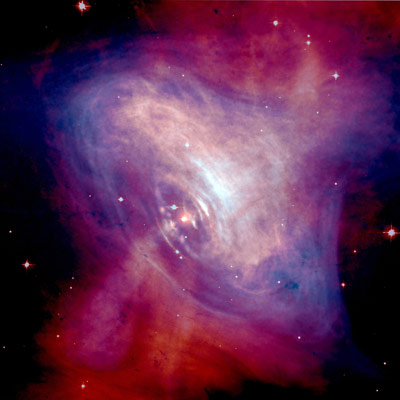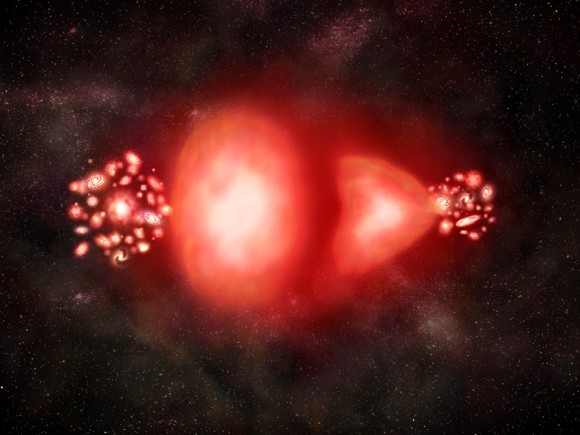What Is Antimatter?
For fans of the Star Trek TV series, antimatter is the high energy fuel that drives the fictional spaceship Enterprise at faster than light speed also known as warp speed.
In science, antimatter is material made up of antiparticles that have the same mass as particles of ordinary matter but reverse charge. In simple terms, antimatter is the opposite, mirror image or evil twin of matter.

How Was Antimatter Discovered
The concept of antimatter came about as a solution to the fact that equations describing a free particle in motion had both positive energy solutions and negative ones.
Paul Dirac was the first person to introduce the concept of an electron’s antiparticle in 1928. He was studying quantum fields. His electron equation was the first example of antimatter.
An electron has a negative charge. In this equation, he predicted and required the existence of another type of particle with exactly the same mass as the electron but with a positive electric charge. He named the antiparticle a positron.
This property doesn’t just apply to the electron. It applies to all fundamental constituents of matter. He stated that every particle has a corresponding antiparticle with nearly identical properties except for an opposite electrical charge.
Just as protons, neutrons and electrons combine to form atoms and matter, antiprotons and antineutrons come together and form antiatoms and antimatter.
Dirac’s prediction marked the first time that something never before seen in nature was predicted and assumed to exist based on just theoretical evidence without observational evidence.
Dirac turned out to be right. Cark Anderson confirmed the prediction in 1932. Both scientists won Nobel Prizes for their achievements. More antiparticles and their properties were discovered later.
How Does Antimatter Behave?

What Happens When Matter Meets Antimatter?
Matter and antimatter attract because of their negative charges. On coming into contact, it is not a happy meeting though. It is a meeting of destruction. Matter and antimatter annihilate emitting radiation. They destroy each other and their energy is transformed into kinetic energy.
Does Antimatter Obey the Law of Gravity?
One big question currently on the minds of astronomers is whether antimatter obeys the law of gravity. Does it have negative gravity? Would a ball of antimatter fall upwards instead of downwards?
Most astronomers believe that antimatter obeys the law of gravity. If it didn’t, that would reveal that we don’t have an accurate understanding of the universe. The the European Laboratory for Particle Physics (CERN) is working to find out how antimatter behaves in relation to the law of gravity.
Does Antimatter Exist In Space Today?
Antimatter sound like the stuff of science fiction movies and novels but NASA says it is real. During the big bang that gave birth to the universe billions of years ago, it is believed that there were equal amounts of matter and antimatter. Then all the antimatter was destroyed leaving a matter filled world where antimatter is not common.
Why this happened is an unsolved mystery in physics. Why did antimatter disappear? Why didn’t the two annihilate and destroy each other? Perhaps matter interacted better with nature than antimatter and so its survival was favored.
Today, the entire world is made up of matter. Stars, dust and everything we see is made up of matter. Any antimatter produced in space when high energy particles collide disappears as it comes into contact with matter in space and annihilates producing radiation.
Dirac predicted that there is antimatter in space. However no experiment has been done to prove its existence. The search for antimatter in cosmic radiation continues.
The search efforts might be paying off. Results from NASA’s Compton Gamma Ray Observatory are revealing what might be clouds and fountains of antimatter in the galactic center.
How We Could Make Use of Antimatter
Astronomers are fascinated with the theoretical possibilities of antimatter. If harnessed properly, it could be applied in many areas of science as follows.
Why not borrow from Star Trek and use it as a fuel to drive a spacecraft at faster than light speed weaving in and out of stars and galaxies in days. That is more theoretical than practical but NASA is actually considering it as a possible fuel for space travel where it may be used for interplanetary and interstellar mission. This kind of technology would make it possible to access and learn about distant galaxies and the origin of the universe.
At Penn State University, the antimatter space propulsion Group is addressing he challenges of using antimatter annihilation as a source of energy for propulsion.
Apart from space propulsion, it could also be used in medical technology and weapons. The amount of energy released after annihilation is available to do work proportionate to the mass of matter and antimatter involved. However, we will have to first learn the nature and properties of antimatter before we can use it.
When cosmologists and physicists uncover the mystery of dark matter, we will learn more about how our universe formed, evolved and continues to evolve.
